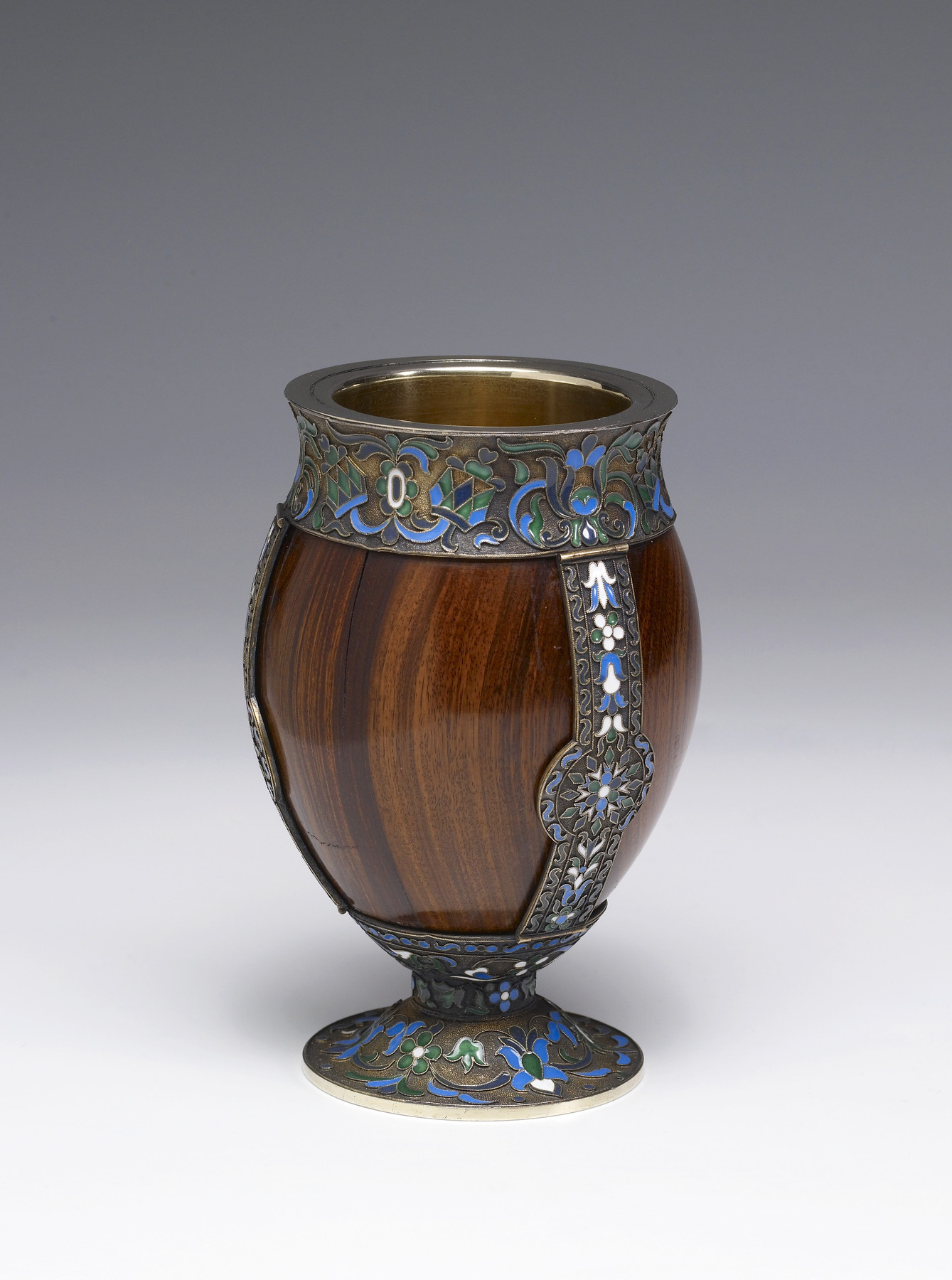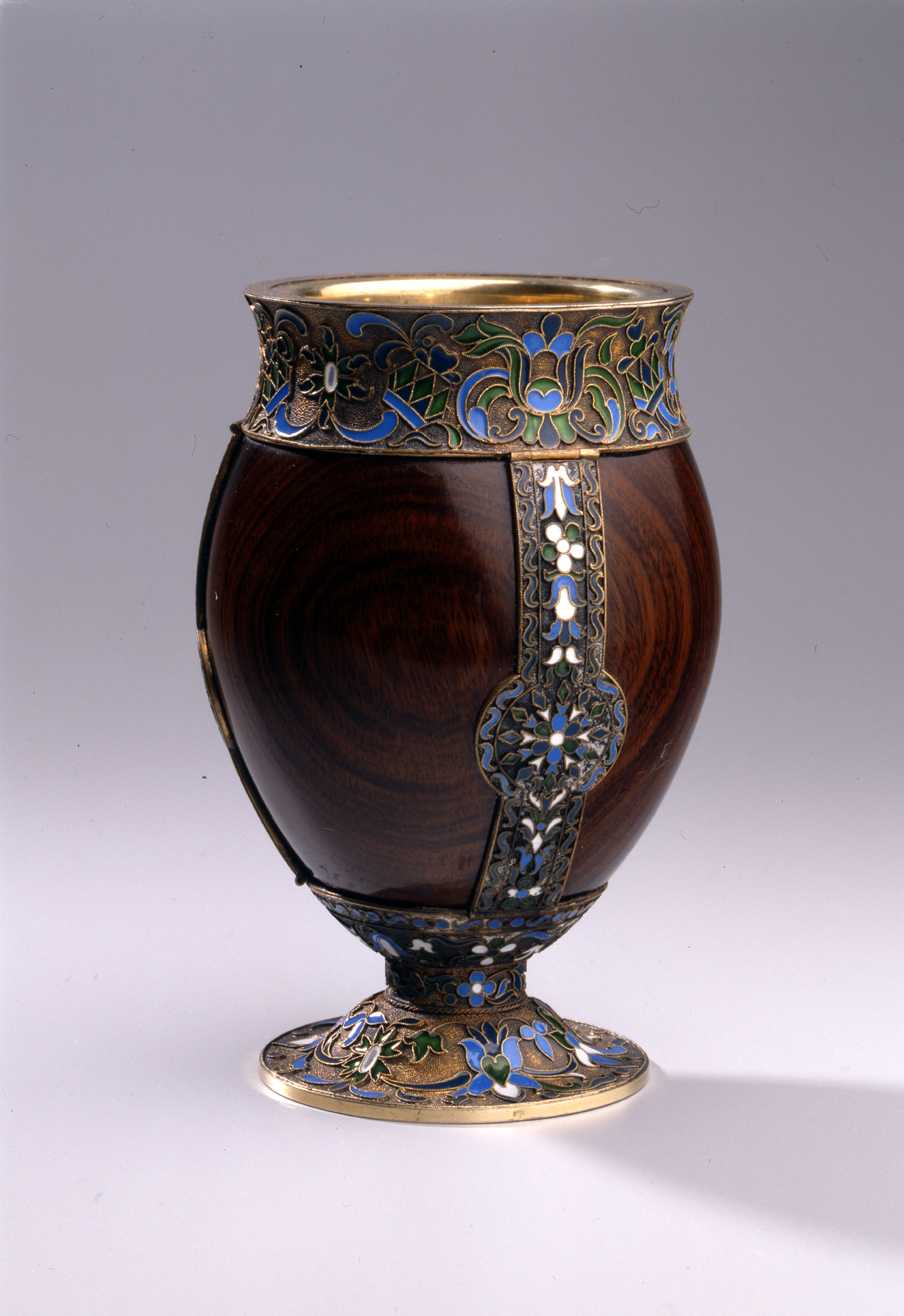Bratina
(18th and 19th Centuries )
The interior of this drinking vessel is in silver gilt whereas the exterior is in a richly veined wood simulating in appearance a coconut shell. Such exotic materials were occasionally employed by Moscow silversmiths for drinking vessels as early as the 17th century. An early example, now in the Walters Art Museum (44.194), which came from the Count Aleksandr A. Musin-Pushkin collection, has been published by Anne Odom in Baltimore 1996, pp. 30-31, no. 5. She also cites another example published by N.V. Kaliazina et al in Russkaia emal' XII-XX veka, St. Petersburg, 1907, p. 141.
Silver gilt and filigree enamel have been used for the bands around the top and bottom of the bratina, the three connecting straps, and the foot. Abstract floral designs in opaque dark and light blue, translucent green and white enamel are rendered in raised filigree designs over an unfinished gilt surface.
The hall marks appear to be illegible because of corrosion, but the circular koskoshnik on the bottom border resembles that of the Kostroma master assayer A. Soldivola, who was active from 1896-1905.
Inscription
Provenance
Provenance (from the French provenir, 'to come from/forth') is the chronology of the ownership, custody, or location of a historical object. Learn more about provenance at the Walters.
Leo Kaplan, New York [date and mode of acquisition unknown]; Mrs. Jean Riddell, Washington, D.C., September 3, 2000, by purchase;
Exhibitions
| 2017-2018 | Fabergé and the Russian Crafts Tradition: An Empire's Legacy . The Walters Art Museum, Baltimore. |
Geographies
Russia (Place of Origin)
Measurements
Overall H: 4 15/16 × Diam: 3 1/4 in. (12.5 × 8.2 cm)
Credit Line
Bequest of Mrs. Jean M. Riddell, 2010
Location in Museum
Not on view
Accession Number
In libraries, galleries, museums, and archives, an accession number is a unique identifier assigned to each object in the collection.
In libraries, galleries, museums, and archives, an accession number is a unique identifier assigned to each object in the collection.
44.983






